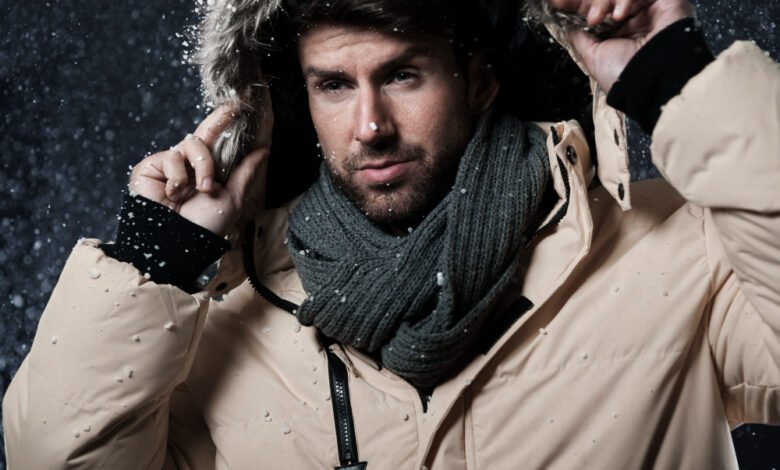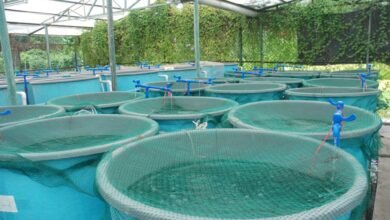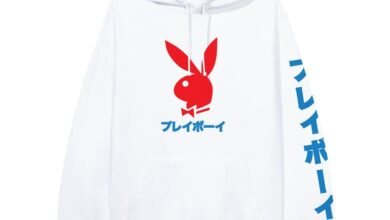
With the advent of new high-tech materials, weightless and stylish winter jacket and coats quickly won the market from “clumsy” fur coats and sheepskin coats that hindered movement. Let’s figure out how to choose the warmest model.
What types and styles of winter jackets are there?
Technological progress has expanded the capabilities of fashion designers. Now materials compete with each other in terms of lightness, waterproofing and warming ability. And the variety of styles can please the most demanding buyer.
Short down jackets
Typically, these are loose-fitting models that reach mid-thigh and above. They are often equipped with a detachable large hood. The color can be either monochromatic or accompanied by various prints. Deep blues, dark greens, beiges, reds, yellows and grays are trending right now. Matte and glossy fabrics are equally often used. Short down jackets are usually insulated with bulky fillers, such as natural down, holofiber or bio-down. More sporty models use thin insulation, such as Thinsulate or padding polyester.
Winter jacket-coat
For those who live in harsh climates, elongated variations that reach to the knee and below are more suitable. Men’s jackets are often equipped with high collars and patch pockets, while women’s jackets can be equipped with fur trim and have a looser cut with a belt in mind.
Parka
Not a single fashion season is complete without men’s and women’s Alaskan jackets. This year was no exception. Parkas are distinguished by a comfortable cut and functional style. They are easy to combine with any style of clothing: sports, casual, even office. In such a jacket you won’t be afraid of any bad weather. After all, the outer layer is made of a special membrane fabric that protects from cold wind, snow and rain, but at the same time does not float the body, does not get dirty and is easy to clean. Synthetic materials are usually used as insulation, such as environmentally friendly and very warm DuPont Sorona bio-down. A cozy parka for men is usually equipped with a detachable hood with fur trim, numerous laces, drawstrings and pockets. The zipper is additionally equipped with a protective strip and buttons, which is very convenient in bad weather.
Quilted jacket
A stylish option for a winter jacket and coat. The quilting holds the insulation in place, preventing it from moving or shifting inside the product. The main thing is that the size of the compartments is not too small, otherwise the windproof function will be reduced. Stitching options allow the imagination of fashion designers to run wild, because the same model with different stitching looks completely different. Horizontal quilting is suitable for creating a casual or sports outfit. The more traditional square one brings rigor and orderliness to the image.
Oversized
Men’s winter coats and women’s winter jackets in the “cocoon” and “blanket” styles took over the catwalks several seasons ago and are in no hurry to become a thing of the past. This year, voluminous winter clothing is still in fashion. Long winter jackets would be appropriate in a men’s wardrobe as an alternative to a traditional coat. They are characterized by a precise design and discreet colors. They go perfectly with office style, creating an elegant and formal look at the same time. For women, we can recommend cozy and voluminous hypersize models that you can wrap yourself in like a blanket.
Hooded
This important piece of outerwear can be a real salvation during strong winds, rain or snow. Therefore, designers invariably offer models of women’s and men’s jackets with a removable and non-removable hood. For those who don’t like to bother tying a scarf, models with a high collar are suitable. Hoods in women’s and men’s models can be trimmed with natural fur. To prevent it from deteriorating from frequent washing, it is good if the trim is removable, like the hood itself.
What types of fillers are there?
The convenience and comfort of winter clothing depends on the type of filler. At the dawn of the appearance of down jackets, the most warming filler was bird down. Now there are synthetic analogues that warm no worse, but at the same time do not have the disadvantages of natural insulation. Let’s look at the most popular options.
Bird down and feather
Goose, duck, swan and eider down are considered the lightest and warmest among natural fillers. However, due to the high cost of natural down, it is diluted with less warming bird feathers. The warming abilities of the insulation depend on the percentage of down and feathers. 80/20 percent is considered the best. The 60/40 ratio heats less, but costs less. In addition to the high price, the disadvantages include the laboriousness of care and the possibility of allergic reactions to material of animal origin.
Wool
Sheep (less often camel) wool is used, which can be combined with synthetic fillers. It differs from down in greater weight, although it is cheaper. It can also cause allergies, and there is a risk of shrinkage after washing.
Sintepon
Outdated first generation synthetic filler. Quite warm and light, but if not properly cared for, it clumps into clumps. It is poorly ventilated, making it easy to sweat in a jacket made of such material. Advantages – low price.
Holofiber
It can be called a new generation padding polyester. Hollow spiral-shaped fibers made of polyester perfectly retain air, due to which they warm without weighing down the structure. It is easy to care for and durable, but still poorly ventilated.
Fibertek
Another variation of the polyester fiber material. Short spirals are held together with silicone glue. It still restores its shape well, weighs little, and warms well. Plus, unlike previous materials, it “breathes” and does not create a greenhouse effect.
Isosoft
New generation synthetic insulation. Polyester fibers, pressed and twisted into microscopic balls, are bonded together using heat. At the same time, they retain air, like bird down, do not deform when compressed and washed, are ventilated and do not create a steam room effect. But, unlike its predecessors, the material is more expensive.
Thinsulate
Unlike more voluminous analogues, Thinsulate takes up a small volume, despite the fact that it consists of a huge amount of ultra-thin polyester fibers. The material retains air and, despite its small volume, is able to withstand frosts of fifty degrees. Thinsulate is so warm that in more temperate climates it can feel hot. Additional advantages: easy to wash, dries quickly, does not cause allergic reactions.
Bio-down DuPont Sorona
New generation synthetic material based on corn fibers. Initially developed for clothing for polar explorers. Its properties are closest to natural bird down, although it costs much less and does not cause allergies. Moreover, it is easy to care for. It can be washed at home with a regular machine.
Upper and lining material
How warm and comfortable a winter jacket will be depending not only on the insulation, but also on the outer material and lining.
Outer fabric
Modern upper fabric should be wear-resistant, windproof and waterproof, but at the same time not float the body. Membranes, as well as natural fabrics treated with special impregnations, are suitable:
- Polyester. Highly durable synthetic material that meets all requirements. It protects from wind and rain, is highly durable and has a long service life, but can make rustling sounds when moving.
- Membrane fabrics. Consisting of two or three layers, the material copes well with all tasks: it protects from moisture, rain and wind, lasts a long time and does not float.
- Nylon. High-strength synthetic fiber with a water-repellent surface. It weighs little, but is not elastic, so it can partially hinder movement.
- Cotton. Pleasant to the touch natural material. Rarely used because it is blown by the wind. Suitable for winter clothing in warm regions.
- Mixed materials. They combine the advantages of other fabrics, but do not have water-repellent properties. This disadvantage is solved with the help of special impregnations.
Lining
1. When choosing a winter jacket for men or women, also pay attention to the lining material. It is in direct contact with the body, so it should be pleasant to the touch and well ventilated. It is desirable that the lining material is sufficiently durable and does not wear out faster than the jacket itself. Natural materials, such as satin and knitwear, have a low service life, so you should prefer more wear-resistant mixed fabrics.
Winter jacket length
When living in a cold climate, it is optimal to choose elongated models for daily use – at mid-thigh level or even covering the knees. This applies to both men’s and women’s wardrobes. And shortened models are more suitable for an active lifestyle, winter holidays or trips.
What else to consider?
No less important are details that seem insignificant at first glance, such as seams, quilting, edging, and the quality of fittings.
Seams
Carefully examine the quality of the seams. They should be smooth both inside and outside, without protruding threads or tears. Pay attention to whether the filler is coming out through the seams. To prevent cold air from blowing in, some manufacturers additionally tape the seams. This provides more reliable heat retention and is especially important for cold climates.
Lightning
It is convenient if the jacket is equipped with a two-way zipper, which can be opened both from the top and from the bottom. Also note that there is a protective strip on top of the clasp. Even a high-quality zipper will be blown by the wind, so it must be additionally protected inside and out.
Quilting
Jackets with natural filling, as well as those with voluminous synthetic filling, require quilting. It does not allow the insulation to clump together or migrate to other areas of the product. Since quilting reduces thermal insulation, it should not be too thick. The optimal size of the compartments is no more than 20*20 cm.
Drawstrings and laces
The drawstring can be elastic (at the waist) or with laces – along the edge of the hood, at the neck, along the bottom edge. The ability to pull the down jacket closer to the body provides additional protection from cold winds and severe frosts.
How to choose a winter jacket by size
Winter clothing should be loose enough to fit an oversized sweater underneath. Be sure to try on the item before purchasing. Button up your down jacket, raise your arms, sit down, bend over and try tying your shoelaces or adjusting your shoes. If everything is in order, does not pull anywhere and does not restrict movement, then the size is suitable.
If you purchase outerwear in an online store, use the size chart. Remember that American, Russian and European sizes are not the same.
What’s trending?
Every year, fashion designers offer new unusual options for winter jackets and down jackets, but some models have already become classics and are still among the popular trends:
- Cropped voluminous jacket. Nowadays, bright colors, metallic shimmer and unusual prints are in fashion.
- Hypersize. Down jackets and blankets, which seem several sizes larger and are so nice to wrap up in during the cold season, do not go out of fashion for several seasons in a row. Oversized, oversized coats go well with tight-fitting casual clothing.
- Cocoon. A more moderate variation of the oversized zipper. Can be equipped with a hood or a high stand-up collar.
- Parka. A jacket that is excellent in its comfort and functionality. Simplicity of cut, strict silhouette, comfort and elegance. Suitable for people of any age. Pairs equally well with casual, sports and business styles.




